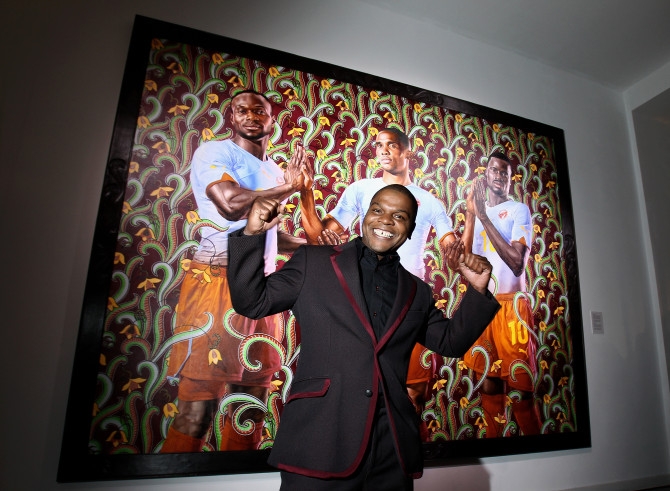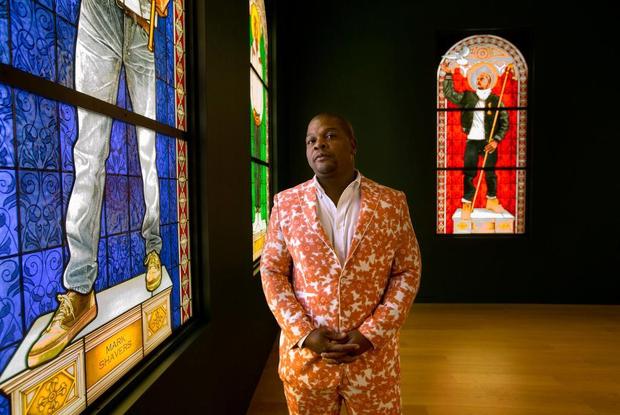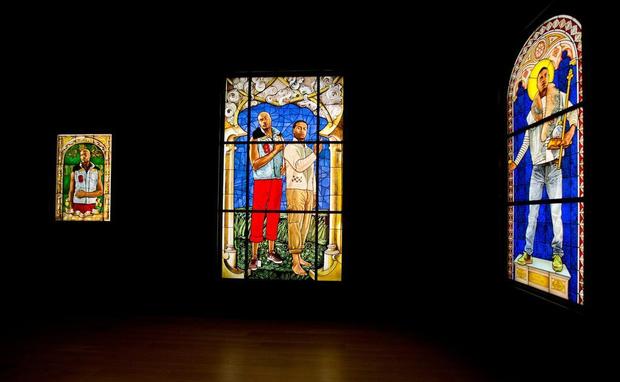Kehinde Wiley Exhibit Opens at Le Petit Palais

Fans of American artist Kehinde Wiley can enjoy his first solo exhibition in Paris as Le Petit Palais presents his portrait series “Lamentations” as part of this year’s Foire Internationale d’Art Contemporain.
In "Lamentations," Wiley tackles religious iconography, depicting models as Jesus Christ, St. Mary and the Virgin Mary, to name a few. The anonymous models were handpicked by Wiley off the streets of New York, a method he’s used for years around the world. Beyond the religious iconography of the exhibit, there seems to be a nod to the racial climate in the United States, particularly in the pieces Mary, Comforter of the Afflicted I & II, in which “Mary” is holding a deceased African American boy. Wiley’s art has never shied away from hot-button issues, leaving fans to wonder if this is his commentary on the current state of affairs in his home country. The Plume reached out to Wiley about his exhibit but did not receive a comment by press time.
Photo Credit: Joyce MarshallWiley’s art draws inspiration from “Old Masters” paintings – paintings from the most celebrated artists in Western art history – typically to create portraits of African Americans as kings, queens, military leaders, aristocrats and more. Dressed in current urban attire, the subjects are bold, confident and regal – an oft unseen look for paintings of African Americans. The titles of each piece typically nod to the inspirational Old Master. "Lamentations" is one of his few exhibits dabbling in religious iconography.
Photo Credit: Joyce MarshallWiley lives and works in New York City, Beijing and Dakar, but he was born and raised in the Los Angeles area. He often speaks of his rough upbringing, but he credits that upbringing for inspiring his artwork. He said to Canadian Art in 2014, “I don’t think that, without my background, I’d even be making this type of work. I mean, I think there’s a certain type of sensitivity to this subject matter that is uniquely my own. It comes from having an interest in the history of art and an interest in portraiture. But it also comes from an interest in looking at some of those questions around gender and performance of sexuality, and some of the bizarre notions of what it means to be a young black man or woman in American society.”
In this interview, Wiley explores his creative process and the meaning of his work:
Shortly after graduating from the San Francisco Art Institute and receiving his MFA from Yale, Wiley began his career as an artist-in-residence at the Studio Museum of Harlem. Wiley’s work can be found in the Los Angeles County Museum of Art, SCAD Museum in Savannah and the Metropolitan Museum of Art in New York City. He’s also exhibited worldwide in galleries such as Steven Friedman Gallery in London, Sorry We’re Closed in Brussels and National Gallery of Art, Warsaw, Poland. He has received multiple awards and recognition, including the US State Department Medal of Arts in 2015. Secretary of State John Kerry said when awarding Wiley his medal that he has, “Redefined the art of portraiture by using highly naturalistic technique not only to depict, but to celebrate and lift up the world’s people in all their magnificent variety.”
For an interactive look into the installation of Wiley's "A New Republic" exhibition at the Modern Art Museum of Fort Worth, Texas:
In addition to Wiley’s contributions to galleries around the world, many of his paintings have shown up in scenes from Fox TV’s wildly popular show "Empire.” In 2014, his work adorned a FIFA World Cup poster, and in 2011, they topped 500 taxicabs in New York City.
Despite so much acclaim surrounding Wiley, he also has some pretty harsh critics. He’s been called formulaic and repetitive, by art critics from The Village Voice and his backgrounds “overdone” in some of his earlier works. Roberta Smith of the New York Times criticized his delegation of work, saying, “The problem is that in many of his efforts, the elements battle one another. The figures, which are painted by Mr. Wiley, convey a certain intensity, but the backgrounds, painted by assistants, often seem skimpy, filled in, not quite up to the task.”
“Lamentations” will be on display until Jan. 15, 2017. For more information, check out the Petit Palais website.









